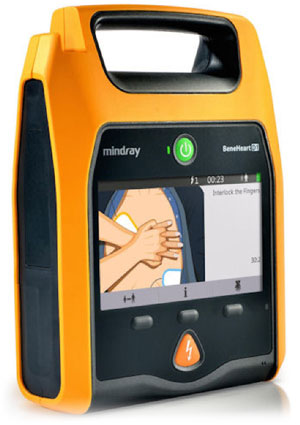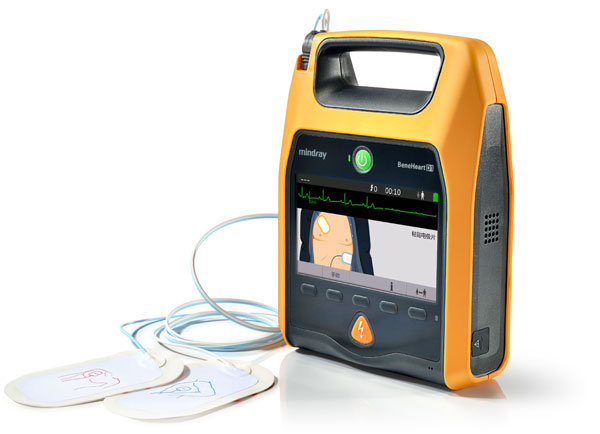Why Defibrillators
 Automated External Defibrillators (AEDs) are the only known device that stops chaotic electrical heart activity and allows the heart to re-establish itself to a normal rhythm.
Automated External Defibrillators (AEDs) are the only known device that stops chaotic electrical heart activity and allows the heart to re-establish itself to a normal rhythm.
AEDs are portable and designed to be used by virtually anyone to save a life.
The step-by-step voice and visual instructions to guide a user through the entire defibrillation process as well as CPR. The voice prompts explains how to check for breathing and how to position electrode pads on the person's chest. Once the pads are in place, the AED automatically measures the person's heart rhythm, determines if a shock is necessary, and delivers a shock only if one is needed. AEDs will only recognize a shockable heart rhythm which prevents giving a shock to someone who may be unconscious, but isn't having Sudden Cardiac Arrest. The devices are failsafe and will not cause injury to the user if you follow the voice and visual instructions.
Although the use of AEDs is being taught in CPR courses, technological developments have minimised the need for training, while markedly reducing response time. With or without training, AEDs empower all bystanders to become part of the chain of survival however Australian Defibrillators is providing access to an online AED Training Course and online program management to give responders the opportunity to practice in the use of an AED.
Putting it in Perspective
There are not enough AEDs, resulting in lost opportunities to save even more lives. Tragically, many Australians have never even seen an AED even though they walk past them daily in airports, sports stadiums, shopping centres, etc. They are commonly thought of as a piece of expensive medical equipment only used by doctors in a hospital or paramedics in the ambulance. In reality, the majority are needed in homes and public places, outside a hospital setting.
Defibrillation within 3 minutes increases the chance of survival soar from 5% to over 70%. Each minute is critical to determining survival and the extent of permanent damage to your brain and body. Local Ambulance typically can’t respond within 3 minutes which is why AEDs should be made available in homes and public places including:
- Corporate Offices
- Government Buildings
- Schools
- Industrial Facilities
- Construction Sites
- Medical & Dental Surgeries
- Golf Courses
- Health Clubs
- Rural and Remote Locations
- Parks and Sporting Facilities
- Anywhere we can save lives!
Although CPR may buy you a little time, an AED is the only definitive treatment for a sudden cardiac arrest.
